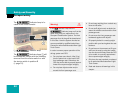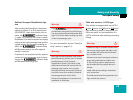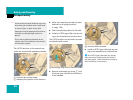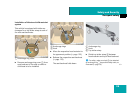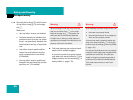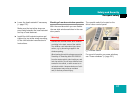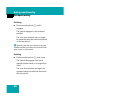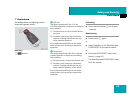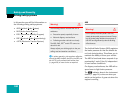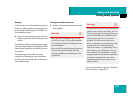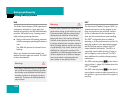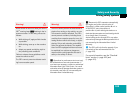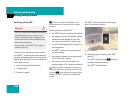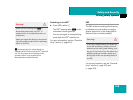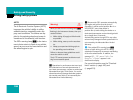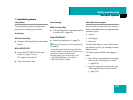
100
Safety and Security
Driving safety systems
In this section you will find information on
the following driving safety systems:
ț ABS (Antilock Brake System)
ț BAS (Brake Assist System)
ț ESP
®
(Electronic Stability Program)
ț EBP (Electronic Brake Proportioning)
ț 4-ETS (Electronic Traction System)
ABS
The Antilock Brake System (ABS) regulates
the brake pressure so that the wheels do
not lock during braking. This allows you to
maintain the ability to steer your vehicle.
The ABS is functional above a speed of ap-
proximately 5 mph (8 km/h) independent
of road surface conditions.
On slippery road surfaces, the ABS will re-
spond even to light brake pressure.
The - indicator lamp in the instrument
cluster (
୴ page 26) comes on when you
switch on the ignition. It goes out when the
engine is running.
Warning! G
The following factors increase the risk of
accidents:
ț Excessive speed, especially in turns
ț Wet and slippery road surfaces
ț Following another vehicle too closely
The ABS, BAS, ESP
®
and 4-ETS cannot re-
duce this risk.
Always adjust your driving style to the pre-
vailing road and weather conditions.
i
In winter operation, the maximum effective-
ness of the ABS, the BAS, the ESP
®
, the EBP, and
the 4-ETS is only achieved with winter tires
(
୴ page 405) or snow chains as required.
Warning! G
Do not pump the brake pedal. Use firm,
steady brake pedal pressure instead. Pump-
ing the brake pedal defeats the purpose of
the ABS and significantly reduces braking
effectiveness.



